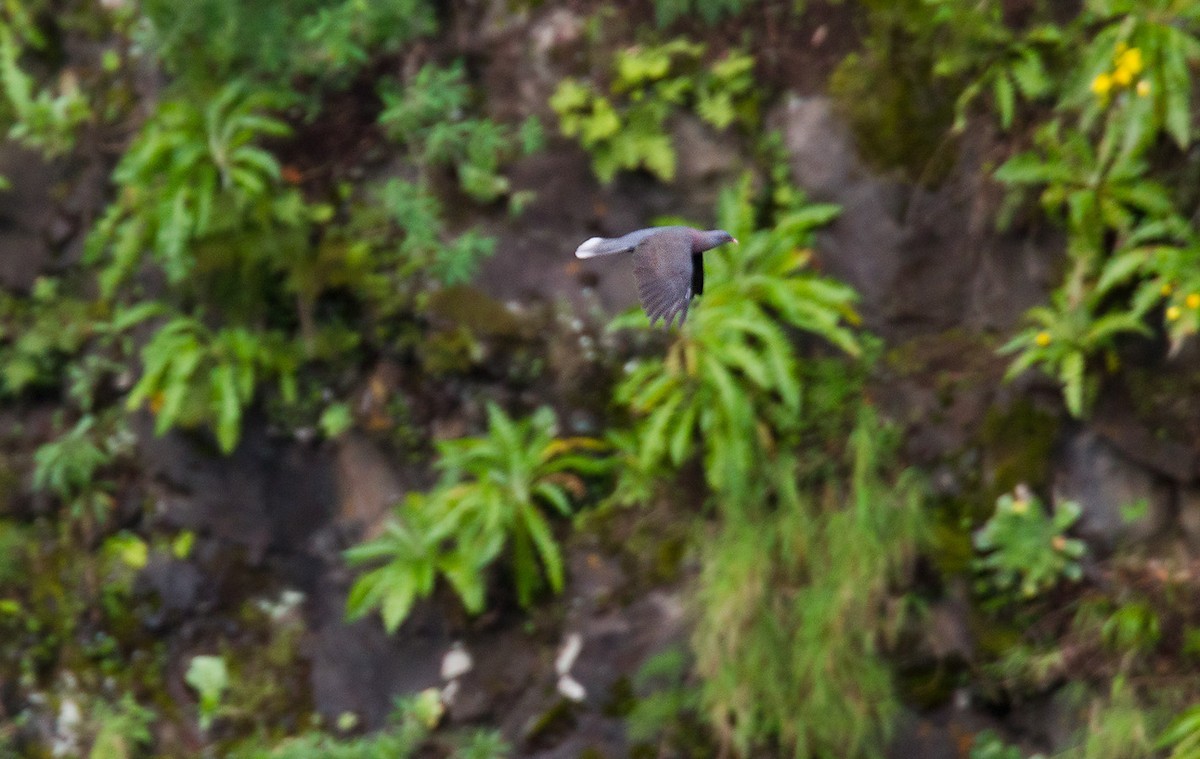Laurel Pigeon
A species of Old World Pigeons Scientific name : Columba junoniae Genus : Old World Pigeons
Laurel Pigeon, A species of Old World Pigeons
Botanical name: Columba junoniae
Genus: Old World Pigeons
Content
Description General Info
 Photo By Lars Petersson
Photo By Lars Petersson Description
The laurel pigeon is a rather plain, dark grey bird of 38 cm. Large, dark brown and grey pigeon. Mainly dark sepia-brown, redder on underparts. Pale grey tail with broad, whitish terminal band. Extensive green gloss to rear crown and hindneck becoming pink on upper mantle. Whitish bill and pale eye. A rare resident breeder in the mountain laurisilva and Canary pine forests, the laurel pigeon builds a stick nest in a tree. There it lays one white egg. At 40–43 cm, a laurel pigeon looks like a very dark wood pigeon. It is a basically dark brown bird, with a dark pink breast. The lack of any white markings, together with its darker markings, distinguish it from the other species. Brown, rather than dark grey plumage, and the lack of dark bands on the grey tail distinguish it from the other pigeon endemic to the Canary Islands, Bolle's pigeon. A laurel pigeon's flight is quick and performed by regular beats. An occasional sharp flick of the wings is characteristic of pigeons in general. Often, the bird takes off with a loud clattering. The call is a hoarse hiccuped cooing. Dark tail base and rump and overall slate-grey colouration. Voice Crooning pu-pu-pooo. The similar Canarian species, the Bolle's pigeon or dark-tailed laurel pigeon Columba bollii has a pale grey subterminal band and blackish terminal band to tail. 
Size
38 cm
Nest Placement
Cliff
Feeding Habits
Laurel Pigeon primarily eats fruit, buds, grains, and flowers, favoring fruits from Ocotea foetens and Persea indica. Laurel Pigeon forages in trees and on the ground, showing remarkable terrestrial agility. Differing from C. bollii, laurel Pigeon's diet includes significant amounts of Rhamnus glandulosa leaves and Bituminaria bituminosa seeds.
Habitat
The habitat of laurel Pigeon primarily consists of laurel forests located in mountainous island regions. These birds dwell in the dense woodlands made up of trees like Erica arborea, Laurus, and Myrica faya. Their preferred environments are deep canyons, steep slopes, and large escarpments, often found within mature laurel forests or, occasionally, in scrubby zones and mixed pine stands at the periphery of these forests.
Dite type
Granivorous
General Info
Feeding Habits
Bird food type
Distribution Area
The laurel pigeon is endemic to the mountainous subtropical Atlantic west Canary islands, where it occurs on the islands of La Palma, La Gomera, Tenerife and El Hierro. In the 1980s, the population was estimated at 1,200-1,480 individuals, but more recent surveys have shown that it is more numerous, and more widely distributed. The largest subpopulation is found on La Palma, where it occurs across much of the northern half of the island. The species is common on La Gomera, where it is found primarily in the north, and also occurs patchily on the northern slopes of Tenerife. It has recently also been recorded on El Hierro; however, breeding there has not yet been confirmed3,4. Although the species was recently suspected to be declining on Tenerife. Formerly also bred on the neighbouring Gran Canaria. It mainly occurs on the northern slopes of the mountains, but smaller numbers are found in the south where suitable patches of laurel forest remain. The natural habitat is tall laurisilva forest or dense tree heaths which are cloud-covered for much of the year. The forests consist mainly of Azores laurel, Oreodaphne foetens, til, Madeira mahogany, Canary laurel, faya, lily of the valley tree and the picconia. The Trocaz pigeon prefers primary forests, but secondary growth is used for feeding, and agricultural land is also visited, especially at times of fruit shortage. Most of the pigeons are found below 1000 m (3300 ft), and their prime environment appears to be steep ravine-indented slopes along artificial watercourses, with the occasional large dead laurel tree and much tree heath. This species is highly mobile between different areas at different times of year. It was very abundant when the islands were first colonised by humans, but was extirpated. The losses on the islands were largely due to deforestation for wood and to create agricultural and grazing land. The exclusion of livestock from the native forest allows it to regenerate and create more suitable habitat. Some illegal hunting and poisoning continues because of the damage this pigeon can do to crops. Perhaps the main limiting factor on the rate at which the pigeon increases its numbers is eggs and young being taken by introduced black rats. It is now classed as Near Threatened on the IUCN Red List, an improvement on its Threatened status in 1988. This species is protected under the European Union Birds Directive, and the laurel forests under the Habitats Directive. 

 Photo By Lars Petersson
Photo By Lars Petersson Scientific Classification
Phylum
Chordates Class
Birds Order
Pigeons and doves Family
Dove Genus
Old World Pigeons Species
Laurel Pigeon